Nemont
Well-known member
Please note I did not take these pics. I got the emailed to me from the Billings Gazette Photog who was out there the same time I was snooping around.
If you are ever traveling across Hiway 2 you should take a detour to see the lake and the new facility. In additon this area has ample public lands for recreation (just no ATV riding) and great facilities for family camping. Come in the summer and enjoy fishing, hiking, wildlife watching and taking your family to the Fort Peck Summer Theater (a Professional Cast of Actors who perform three nights a week). So all are invited.
*Now ends my official Chamber of Commerce pitch*
Entrance to the new Interpretive Center
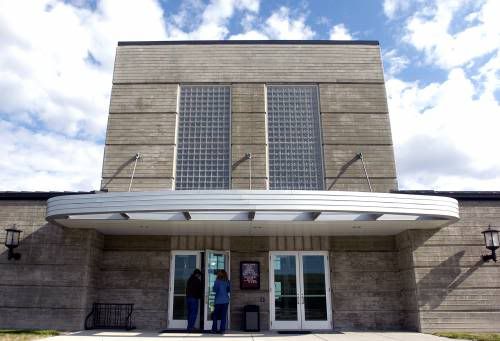
The "Peck's Rex"
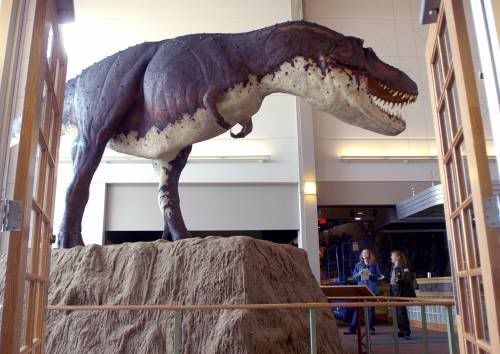
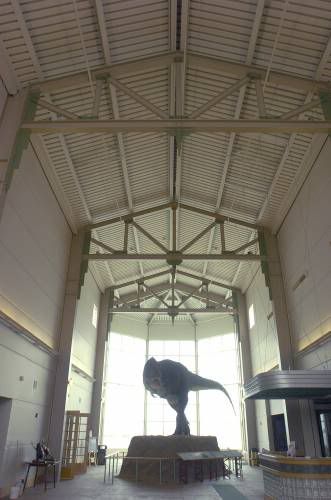
A view of the Power House and Afterbay below the Dam.
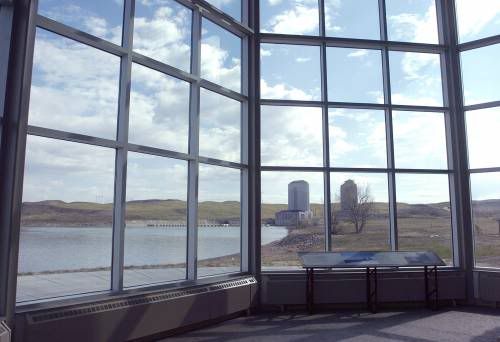
More of the wildlife

A view of the Power Houses on the left, the Dam and lake in the background and the new interpretive centet on the lower right.
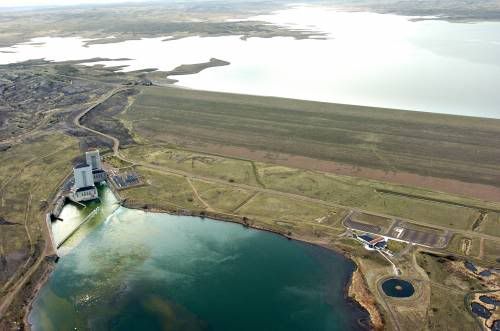
Nemont
If you are ever traveling across Hiway 2 you should take a detour to see the lake and the new facility. In additon this area has ample public lands for recreation (just no ATV riding) and great facilities for family camping. Come in the summer and enjoy fishing, hiking, wildlife watching and taking your family to the Fort Peck Summer Theater (a Professional Cast of Actors who perform three nights a week). So all are invited.
*Now ends my official Chamber of Commerce pitch*
Entrance to the new Interpretive Center

The "Peck's Rex"


A view of the Power House and Afterbay below the Dam.

More of the wildlife

A view of the Power Houses on the left, the Dam and lake in the background and the new interpretive centet on the lower right.

Nemont
."May 6, 2005
Museum, Peck's Rex dedicated Saturday
By DIANE COCHRAN
Of The Gazette Staff
FORT PECK - In the main hall of the Fort Peck Interpretive Center, visitors get a sense of the vast, wide-open country that fills northeastern Montana.
A life-sized replica of Peck's Rex, a Tyrannosaurus rex skeleton unearthed a few years ago near the museum site, doesn't begin to fill the giant room.
Behind the dinosaur, a bay window looking out over Fort Peck Dam's two power plants and the Missouri River stretches almost to the hall's 40-foot-high ceiling.
Near the T. rex's tail, some fish native to Fort Peck Lake swim in a 5,500-gallon cylindrical aquarium, the second-largest fish tank in Montana. The state's largest tank, filled with 8,500 gallons of water, is across the room. It is home to fish that have been introduced into the lake.
The rest of the 18,000-square-foot, $6.7-million museum building houses exhibits that illustrate the sparsely populated northeast corner of the state. The museum focuses especially on paleontology, wildlife and the construction of the Fort Peck Dam.
"Basically, it's what you would come to northeastern Montana to do," said museum director Michele Fromdahl. "The general theme of the whole place is northeastern Montana."
Fort Peck Interpretive Center celebrates its grand opening on Saturday, three years after the building was completed and eight years after the museum was first imagined.
"The first couple of years, it was just a dream," said Linda Sibley, executive director of Fort Peck Paleontology Inc. "It's very, very exciting and a little bit scary."
Sibley was among the first people to campaign for a Fort Peck museum, a place where history and artifacts - particularly dinosaur skeletons - native to the area could be maintained and displayed.
"There was talk about how rich this area is for dinosaur fossils and how few stay here," said Fromdahl, a U.S. Army Corps of Engineers park ranger.
When Peck's Rex was discovered about 20 miles southeast of the dam in 1997, talk of a museum to keep the fossil close to home turned serious.
Fort Peck Paleontology, the corps - which built and oversees the dam - and the U.S. Fish and Wildlife Service pooled resources for the museum project. Fish and Wildlife manages the Charles M. Russell National Wildlife Refuge, a 1.1-million-acre natural area that surrounds Fort Peck Lake.
Neither the wildlife refuge nor the corps had visitor centers, Fromdahl said. Although Fort Peck Paleontology has a field station near the dam, it wasn't a place where a full-sized T. rex skeleton could be displayed.
The Fort Peck Interpretive Center
Visitors to the Fort Peck Interpretive Center can examine three versions of Peck's Rex - a cast of the skeleton, a fleshed-out model based on how scientists think the animal would have looked in life and a hands-on exhibit of the dinosaur's enormous skull.
Paleontologists dug up more than 75 percent of the T. rex skeleton, making it the second-most-complete dinosaur fossil in the world, Sibley said. Another dig is planned in hopes of finding more of the animal's 300 bones.
Peck's Rex is clearly the museum's centerpiece, but $1.6 million was allotted to fill the building with other exhibits.
Among them are the two jumbo aquariums. Unfiltered water from the bottom of Fort Peck Lake is continuously pumped through the tanks. As fresh water rises from their bases, the tanks overflow into a pipe that carries the water back into the Missouri River.
"Whatever the lake looks like is what the (tank) water looks like," Fromdahl said.
Also on display are more than 6,000 photographs taken during the Depression-era construction of Fort Peck Dam, the world's largest earthen dike. Some black-and-white frames are featured on interpretive boards, and visitors can view the rest on a computer screen.
The seven-year New Deal construction project turned the Fort Peck area into a bustling metropolis in the 1930s. More than 11,000 workers were employed during peak construction, and 18 shanty towns sprung up around Fort Peck, the government's town.
Workers piled 126 million cubic feet of dirt across the Missouri River, using 34 million pounds of steel pilings as an anchor, and the blocked-off water formed Fort Peck Lake. Shrunken by drought in recent years, the manmade lake is 134 miles long and holds 18.7 million acre-feet of water at full pool.
Replicas of a dredge pipe and metal pilings used to build the dam are tucked into a corner of the museum, and storefronts based on the boomtowns are under construction.
Nearby, mounts of more than a dozen animals that have been spotted in the CMR refuge stand before a 45-foot-long hand-painted mural of Montana scenery.
Fort Peck Interpretive Center held a soft opening last summer, but little more than the Peck's Rex skeleton and the fish tanks were on display. The museum has been closed this spring for construction, and, Fort Peck project manager John Daggett said, word got out about the new exhibits.
"We keep these doors locked because, every time we open them up, people come in," Daggett said as he let a reporter and photographer into the museum earlier this week. "One person even drove down from Great Falls to come in




